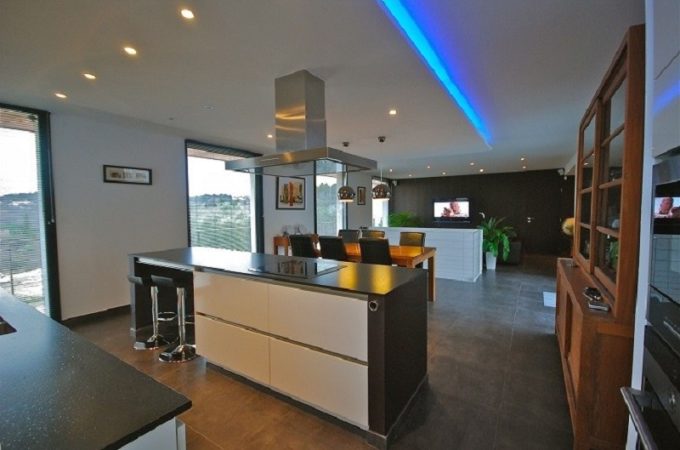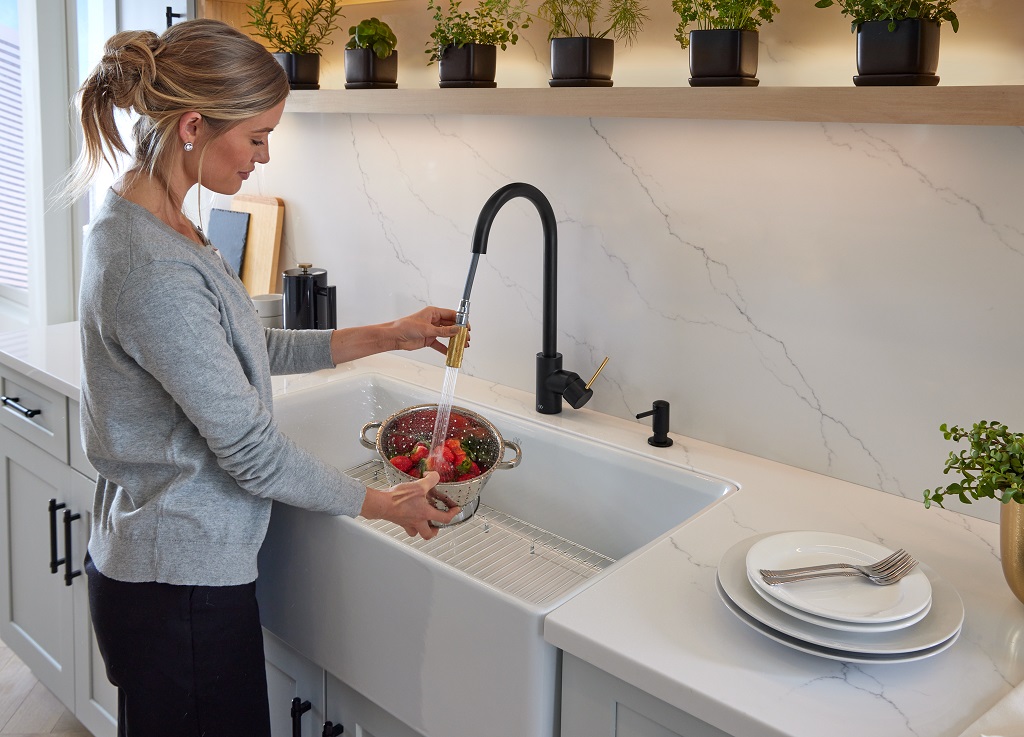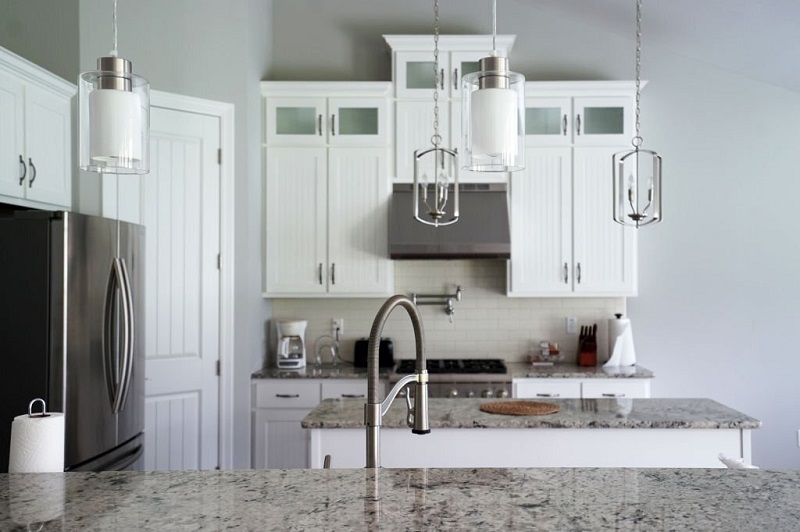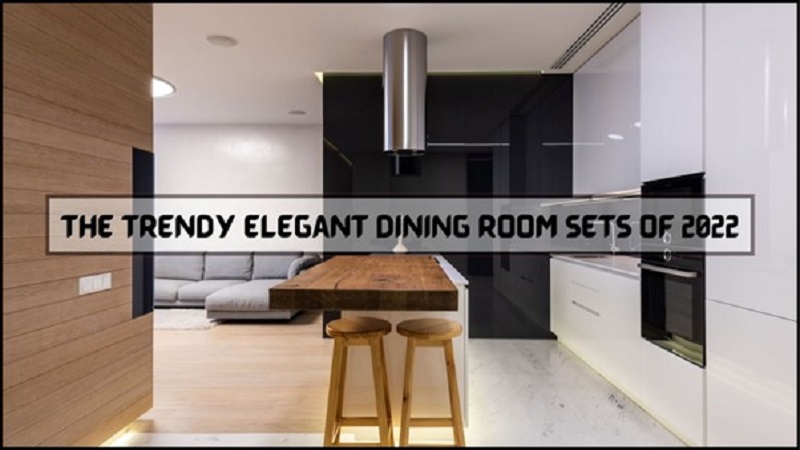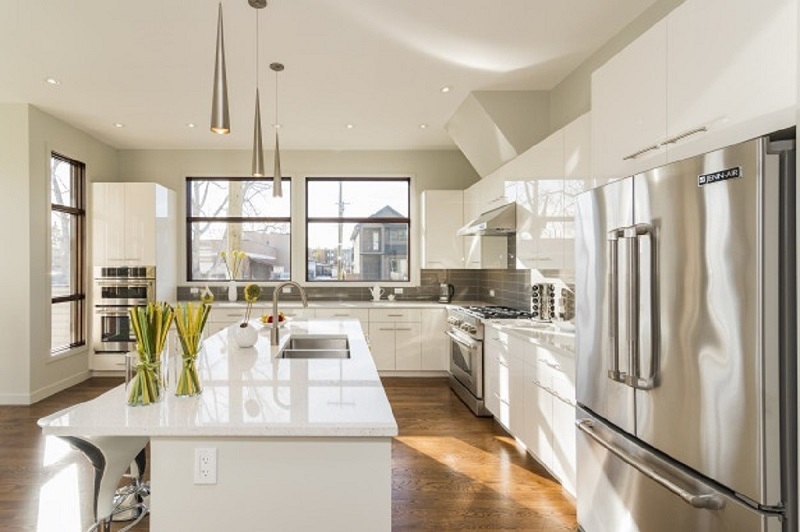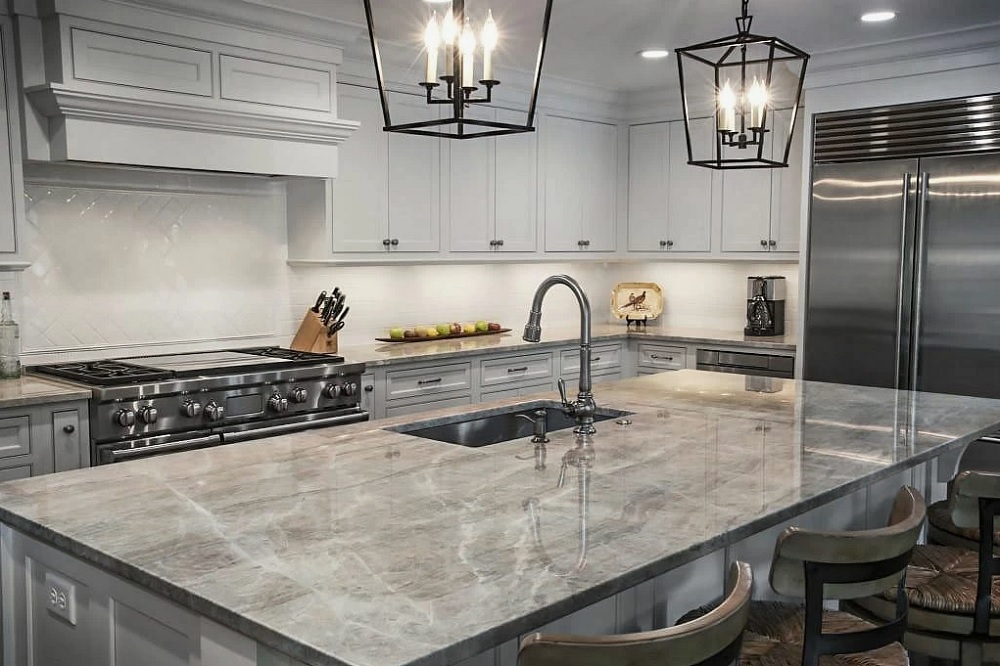
A Comprehensive Buyer’s Guide to Granite Countertops
Granite countertops have been a favorite choice among homeowners for many years and continue to be one of the top kitchen design trends in 2025. They are known for their natural beauty, strength, and durability. Many people prefer granite because it brings a touch of elegance and luxury to any kitchen or bathroom. Each granite slab has its own natural pattern and color, making every countertop unique.
With so many materials available in the market, choosing the right countertop can feel confusing. Some people prefer quartz or marble, while others like the timeless charm of granite. This guide will help you understand everything about granite countertops in simple words. You will learn about their benefits, drawbacks, prices, care tips, and design ideas so you can make an informed decision before buying.
What Is A Granite Countertop?
Granite is a natural stone that forms deep beneath the earth’s surface through heat and pressure. It is composed mainly of quartz, feldspar, and mica, which give it its strength and shine. Once the stone is mined from quarries, it is cut into large slabs and polished to create a smooth, glossy surface that makes a perfect granite countertop for kitchens or bathrooms.
What makes each granite countertop special is its unique pattern. No two granite slabs are ever identical. Each one has its own natural veins, speckles, and color variations, giving every granite countertop a one-of-a-kind appearance. This makes granite a very popular choice for people who love a natural and elegant look.
Granite countertops are available in different thicknesses, usually 2 cm or 3 cm. Thicker slabs are more durable and can handle more weight. Because granite is a natural stone, it resists scratches, heat, and daily wear when maintained properly. A granite countertop offers the perfect combination of natural charm and long-term durability, making it an ideal addition to any modern home.
The Advantages and Disadvantages of Having Granite Countertops
Granite offers a lot of benefits, but it also has a few drawbacks that are important to consider before buying.
Advantages of Granite Countertops
Granite is one of the most durable materials available for kitchen counters. It can withstand heavy cooking activity, cutting, and even hot pans placed directly on the surface. The natural hardness of granite makes it resistant to scratches and chips.
It is also heat-resistant, which is perfect for people who cook often. You can safely place hot pots and pans on the surface without worrying about damage. Granite countertops are also stain-resistant if they are properly sealed. The sealing prevents liquids like coffee, oil, or wine from soaking into the stone.
Another advantage of granite is its natural beauty. The stone has a luxurious and elegant appearance that enhances the entire kitchen. It adds real value to your home and can increase resale value because buyers love the premium look of granite. With a wide range of colors and patterns, you can easily match granite with any kitchen style, from classic to modern.
Disadvantages of Granite Countertops
While granite has many strengths, it also has a few downsides. Granite requires regular sealing to prevent stains. Most experts recommend sealing once a year to maintain its shine and resistance. If the sealing is not done properly, granite can absorb liquids and lose its smooth finish.
Granite countertops are also heavy, so they must be installed by professionals. The cabinets underneath must be strong enough to support the weight. Granite can also be more expensive than some materials like laminate or tile, especially if you choose rare or imported stone.
Lastly, granite is natural stone, so it may have small imperfections or color variations. Some people love this natural look, but others may prefer the more uniform pattern of engineered materials like quartz.
Granite vs Other Countertop Materials
It can be helpful to compare granite with other popular countertop materials to understand what makes it stand out.
Granite vs Quartz
Granite is a natural material, while quartz is engineered. Quartz countertops are made from crushed quartz mixed with resins and pigments, creating a smooth and consistent surface. Granite, on the other hand, is 100 percent natural and has unique patterns.
Quartz does not need sealing and is easier to maintain. Granite requires some care, but it offers more heat resistance. If you want a completely natural and one-of-a-kind surface, granite is a better choice. If you want a uniform design with less maintenance, quartz might be ideal.
Granite vs Marble
Marble is another beautiful natural stone, but it is softer and more porous than granite. Marble can scratch and stain easily, especially if used in a busy kitchen. Granite is more practical because it is harder and more durable.
While marble gives a luxurious and classic look, granite provides more strength and lower maintenance. If you love the beauty of marble but want something that lasts longer, granite is a great middle ground.
Granite vs Laminate
Laminate countertops are made from layers of paper and plastic bonded together. They are cheaper than granite but far less durable. Granite can last for decades, while laminate often wears out in a few years.
Granite also looks much more elegant and real. Laminate can imitate stone, but it cannot match the natural depth and texture of granite. While laminate is a good choice for a low budget, granite is a long-term investment in both beauty and strength.
Trending Granite Colors and Designs
Granite comes in a wide range of colors, patterns, and finishes, making it easy to find something that fits your kitchen’s theme. Each slab of granite has its own natural beauty. Here are some popular choices in 2025.
- White Ice Granite: A clean white base with gray and blue crystals that make the space bright and open. Perfect for modern kitchens.
- Black Galaxy Granite: A deep black surface with tiny gold and silver specks that sparkle under light. This gives your kitchen a bold and elegant look.
- Blue Bahia Granite: A rare and exotic blue stone that adds a cool and luxurious vibe. Often used in high-end kitchens.
- Ubatuba Granite: Dark greenish-black granite with golden specks that look rich and sophisticated. A popular choice for darker interiors.
- Kashmir White Granite: Soft white stone with gray and red mineral spots. Works beautifully with both light and dark cabinets.
- Steel Gray Granite: A smooth, medium-gray color that fits minimalist and industrial kitchens. Easy to match with stainless steel appliances.
Because granite is natural, no two pieces look the same. This uniqueness adds charm and personality to your home.
What Affects Granite Countertop Prices
The price of granite countertops can vary widely depending on several factors. The granite countertops cost is mainly influenced by the color and rarity of the stone. Some stones are more common and affordable, while rare granite types or those imported from other countries can be expensive. The thickness of the slab also affects the cost, as thicker granite slabs are stronger but heavier and more costly. The edge design also plays a role, with simple edges like straight or beveled being cheaper, while decorative ones like ogee or waterfall are more expensive. The complexity of installation can also change the price, as curved countertops, kitchen islands, or large surfaces with cutouts for sinks and stoves require more labor. Lastly, transportation and fabrication costs add to the total price, especially if your granite comes from overseas. To get a deeper understanding of these pricing factors, learn more.
Is Granite More Expensive Than Other Materials
Yes, granite is usually more expensive than materials like laminate, tile, or wood. However, it is less costly than high-end marble or some premium quartz brands. The reason is that granite is a natural stone that must be mined, shaped, and polished, which takes time and effort.
Although the initial cost may seem high, granite offers great long-term value. It lasts for decades, resists damage, and adds to your home’s resale value. Over time, it is actually a smart investment because you will not need to replace it often.
Granite’s combination of beauty, durability, and natural charm makes it worth the price for homeowners who want a long-lasting and elegant countertop.
Tips on How to Clean and Maintain Granite Countertops
Granite is easy to care for if you follow simple cleaning habits. For daily cleaning, use mild dish soap and warm water with a soft cloth. Avoid using acidic cleaners like vinegar, lemon juice, or ammonia, as these can damage the seal.
Always wipe spills immediately, especially from coffee, wine, or oil, to prevent stains. Even though granite is sealed, it is still best to clean up quickly. To maintain its shine, re-seal the surface once a year or as needed. A properly sealed granite countertop will resist stains and moisture.
Use cutting boards for chopping food instead of cutting directly on the granite to prevent scratches. Also, place trivets or mats under hot pots to avoid sudden heat shocks that might cause small cracks.
With regular cleaning and proper sealing, granite countertops will stay glossy and new for many years, keeping your kitchen fresh and elegant.
Things to Consider Before Buying Granite Countertops
Before purchasing granite countertops, there are a few important things you should think about to make the best choice for your kitchen.
1. Set Your Budget and Style: Granite comes in different grades and price ranges. Decide how much you want to spend before shopping. Think about your kitchen design and what color or pattern will match it best. Lighter colors make a small kitchen look bigger, while darker colors add warmth and richness.
2. Choose the Right Thickness and Edges: Granite slabs are usually available in 2 cm and 3 cm thicknesses. Thicker slabs are stronger and give a more luxurious look. You can also choose from many edge styles such as straight, rounded, beveled, or waterfall depending on your taste and budget.
3. Visit Showrooms and Compare Samples: Pictures online may not show the true color of granite, so always visit local showrooms. Look at different slabs under real lighting to find the one you love. You can even bring a sample of your cabinet or flooring to see how it matches.
4. Ask for Quotes and Warranties: Get price quotes from multiple installers before making your final decision. Ask what services are included, like sealing and installation. Also, check for warranties on both material and labor to protect your investment.
5. Think About Sustainability: Choose suppliers who follow eco-friendly quarrying and production methods. Some companies use recycled stone or minimize waste during cutting. By choosing responsibly sourced granite, you can have a beautiful countertop while helping the environment.
Conclusion
Granite countertops are one of the best choices for homeowners who want strength, style, and natural beauty in their kitchen. They are durable, heat-resistant, and elegant, making them suitable for both modern and traditional homes. Although they may cost more at the start, they last for many years with minimal care, making them a great long-term investment.
Granite gives your kitchen a unique and luxurious look that few materials can match. It increases the value of your home and adds timeless beauty that never goes out of style. With proper sealing and maintenance, your granite countertop will remain shiny, smooth, and beautiful for decades.
So, if you are planning to remodel your kitchen or build a new one, granite countertops are truly worth considering. They bring together nature’s beauty and human craftsmanship, offering a perfect balance of elegance and durability for every home.

